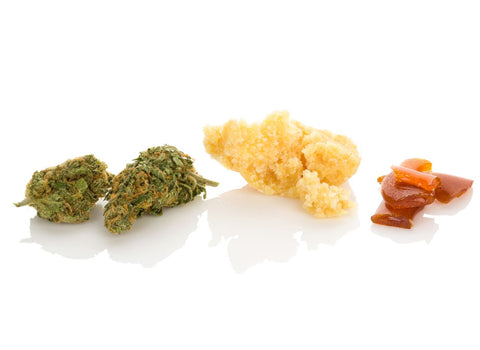
Chemotherapy brings harsh side effects. Microdoses of cannabis may be a promising way to gently alleviate them.
Many people turn to small doses of cannabis to fight cancer and find that it also alleviates chemo-related side effects such as nausea, chronic pain, wasting, and poor mental health.
If you’re diagnosed with cancer and experience unpleasant chemotherapy-induced adverse effects, consult your doctor and choose from our collection of low-dose cannabis edibles to give your body a helpful hand in beating back cancer cells.
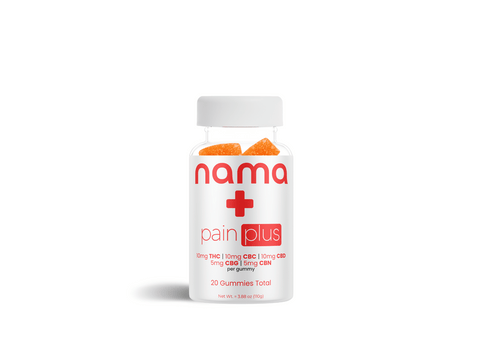
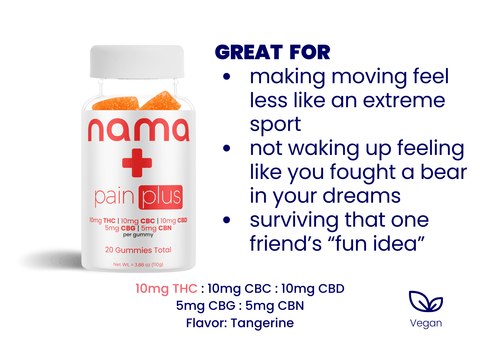
THC: 10 mg | CBC: 10 mg | CBD: 10 mg | CBG: 5 mg | CBN 5mg
Why does chemotherapy have unpleasant side effects?
Chemotherapy uses drugs to destroy cancer cells. It disrupts their ability to grow, divide, and spread. Cytotoxic (cancer-targeting) drugs can operate in any of the following models:
- They directly damage cancer cell DNA, proteins, and other components needed for replication. This prevents cancer cells from being able to duplicate properly and spread.
- They disrupt the microtubule function in cells. Microtubules are crucial structures that pull apart cell contents when cells divide, so chemo drugs target and damage these to stop replication.
- They initiate apoptosis (programmed cell death) in cancerous cells. Apoptosis is the body's natural cell death process, in which chemo meds can activate prematurely in cancer cells, triggering them to die off instead of multiplying.
All of these mechanisms are essential to preventing cancer cells from dividing and growing out of control. While chemotherapy may act aggressively on cancer cells, it may also inadvertently affect healthy cells, causing adverse symptoms during treatment.
Common negative side effects that can occur with chemotherapy include:
- Nausea and vomiting
- Diarrhea or constipation
- Fatigue and weakness
- Hair loss
- Mouth sores
- Insomnia and sleep issues
- Mental cloudiness and lack of focus (“chemo brain”)
- Increased risk of infection
- Anemia
- Easy bruising and bleeding
- Loss of fertility
- Nerve damage (neuropathy)
- Skin changes: redness, dryness, darkening, increased sensitivity, and rashes
Chemo can leave patients with cancer struggling with debilitating side effects day-to-day. Emerging research indicates that precise, small doses of cannabis may help alleviate some cancer symptoms without getting them “high” in the process.
Whether you’re undergoing chemo or simply want to improve your health and well-being, read more about the benefits of microdosing cannabis.
Can THC and CBD gummies help soothe chemo side effects?
Our cannabis edibles—gummies and drinks—contain precisely dosed, low amounts of cannabinoids such as Delta 9 THC and CBD that may help soothe many chemo adverse effects. Hinz and Ramer point to a “synergistic effect of cannabinoids in combination with currently used chemotherapeutic agents and other therapeutic options.”
Spanish researchers confirm these findings and reveal that combinations of cannabinoids with classic chemotherapeutic agents demonstrate a robust antitumor effect against glioblastoma tumors.
Combinations of cannabinoids with classical chemotherapeutic drugs such as the alkylating agent temozolomide (the benchmark agent for the management of glioblastoma) have been shown to produce a strong anticancer action of cannabinoids in animal models.
The key lies in microdosing: going low and slow to tap into their synergistic medical and therapeutic benefits without the psychoactive effects. When working together, THC and CBD produce the entourage effect. In the entourage effect, cannabinoids enhance each other’s benefits while minimizing the potential side effects. For example, the beneficial effects of cannabidiol (CBD) become more pronounced when you take CBD and THC together, and vice versa.
THC and CBD go well together because of the way they interact with the endocannabinoid system (ECS).
Cannabis and the endocannabinoid system
The endocannabinoid system is a biological system in our bodies that regulates key physiological processes. It uses signaling molecules called endocannabinoids to relay messages between cells and activate relevant receptors. The ECS helps explain why low doses of balanced THC and CBD can powerfully mitigate many chemotherapy effects without overload.
THC and CBD engage the same receptors, which is why cannabis can effectively modulate bodily processes that get disrupted by chemotherapy. Their synergy enhances specific receptor responses modulated by the ECS itself.
For example, chemotherapy frequently causes pain by damaging nerves and tissue. This triggers inflammatory signals to which the ECS responds by trying to limit the immune reaction. THC and CBD may soothe inflammatory processes and chronic pain by supplementing the body’s endocannabinoids and mimicking their functions. They activate the main cannabinoid receptors—CB1 and CB2 receptors—to decrease pain sensitivity and lower inflammation by adjusting key neurotransmitters associated with these chemo-related symptoms.
That’s why our cannabis gummies contain a blend of THC and CBD at different ratios to produce an entourage effect and activate your ECS. The combined microdoses in our full-spectrum CBD gummies deliver relief by targeting symptoms of chemotherapy at their source.
As little as 2.5 mg of THC in our Energy gummies can dial down chemo distress, boost energy levels, and improve mood. The longer you microdose, the more receptors activate to provide cumulative relief for chemo-induced adverse effects.
Which unpleasant side effects of chemotherapy can our low-dose edibles alleviate? Keep reading to find out.
One: cannabis may help fight nausea and vomiting during chemo treatment
Nausea and vomiting frequently accompany chemotherapy because of its cytotoxic effects on the stomach. Chemo drugs damage mucosal lining cells in the stomach and intestines, causing rapidly dividing cells to move food through the gut faster. This impairs nutrient absorption and normal secretion function, which manifests as intense nausea and emesis.
Cannabis has antiemetic properties—small amounts of THC and CBD may help fight nausea and vomiting during chemo. An Australian study found that medicinal cannabis could help reduce nausea and vomiting in cancer patients undergoing chemotherapy, with only 2.5 mg of THC and CBD
A 2021 study found that cannabinoid-based medications such as dronabinol and nabilone may be superior to conventional antiemetics in controlling chemotherapy-induced nausea and vomiting.
Two: microdoses of THC and CBD can stimulate appetite and prevent wasting
Chemotherapy patients often experience appetite loss and food aversion, making adequate nutrition intake more challenging. Those who use cannabis recreationally know all about the “munchies.”
THC and CBD are famous for stimulating appetite. They interact with the ECS to modulate key hunger hormones such as ghrelin. This way, cannabis may mitigate chemotherapy-associated wasting and cachexia (muscle and fat loss), and lower the risk of anemia by enabling patients to consume the calories and nutrients they need.
One study showed that dronabinol improved chemosensory perception and caloric intake from protein in people with anorexia. Another study found that THC and CBD may effectively mitigate lean tissue and weight loss in cancer cachexia to improve outcomes and quality of life.
There is nothing tastier to stimulate appetite and awaken the palate than our low-dose Bliss gummies. A balanced ratio of THC and CBD (only 5 mg per gummy) gently rouses the appetite sensors without an overwhelming high. Pop one gummy, or divide it into halves or quarters, and experience the enticing melon flavors coupled with curated cannabinoids to make eating enjoyable again.
"I only bite off 1/4 of one and it's enough to take the edge off without feeling too "blissful." They taste good and arrive on time."
Three: cannabis edibles can soothe chronic pain in chemo patients
Cytotoxins have deleterious effects on soft tissues, including inflammation, neuropathy, and general bodily pain. Chemotherapy often leaves patients with chronic nerve damage and deep muscular and joint aches.
Small amounts of THC and CBD may mitigate chronic pain in chemo patients through different mechanisms:
- THC and CBD engage CB1 and CB2 receptors that regulate neurotransmitter release to dampen pain signaling. A 2000 study found that “cannabinoids can produce antinociception and antihyperalgesia through various mechanisms dampening pain signaling at peripheral, spinal and brain sites.”
- CBD decreases inflammatory protein production which can drive pain from nerve damage and tissue injury. According to van den Hoogen, et. al., CBD may help alleviate pain by reducing inflammation.
- Dopamine release induced by THC triggers pain relief through interactions between dopamine and opioid signaling pathways.
- Pain perception and coping mechanisms are influenced by the effects of cannabinoids on the limbic system's emotional processing.
Four: THC and CBD edibles may clear the mental fog and fatigue of chemo
Chemotherapy may sap your clarity, cognitive function, and energy. The so-called “chemo brain” refers to the mental fogginess and impaired memory function that result from chemotherapy’s neurotoxic effects. Through microdosing, cannabis might help clear the mental mush.
Researchers show that THC and CBD have neuroprotective and cognition-enhancing properties, although they warn that higher THC doses may cause the opposite effects. THC is the main psychoactive component in cannabis, so when taken in sufficient amounts, it can harm short-term memory formation.
The mental fog and profound fatigue brought on by chemotherapy can also dampen mood, creativity, and motivation. According to research, THC sparks just enough dopamine to amp up our creative juices without making you feel sluggish. An increase in dopamine boosts mood, enhances productivity, and reduces anxiety and stress.
Five: microdosing cannabis relieves anxiety and depression
The profound physical and emotional distress of chemotherapy may cause and aggravate mental health issues such as anxiety, depression, and pervasive stress in patients. As cancer takes an unavoidable toll, cannabis microdosing arms patients’ innate biology to better handle chemo-exacerbated anxiety. Where heavy cannabis use can degrade your mental and emotional well-being, cannabis microdoses are beneficial for mental health.
Research proves the anxiety-reducing effects of cannabinoids at low doses (10 milligrams per serving or lower). A 2020 study found that “cannabinoid therapies (containing primarily CBD) may provide a more effective treatment for people with pre-existing anxiety or as a potential adjunctive role in managing anxiety or stress-related disorders.”
A 2022 study confirmed the “efficacy and tolerability of a full-spectrum, high-CBD product for anxiety.” Though THC and CBD don't eliminate anxiety, microdoses can gently turn down the volume on distress signals overloaded by chemo's physically and mentally draining effects.
Order our Relax Plus gummies and experience the perfect blend of 5 mg of THC with 25 mg of CBD per piece. They will help dial back chemo-compounded anxiety with a mellow sense of calm to get you through.
Six: cannabis improves sleep quality for chemo patients
Quality sleep is crucial for well-being, but it frequently eludes cancer patients undergoing chemotherapy. The physical discomfort and emotional distress from cancer and intensive treatment make it extremely difficult for patients to fall asleep and stay asleep throughout the night. Cannabis microdoses may help fight insomnia and other sleep disorders.
A 2019 systematic review found that a combination of THC and CBD helped people fall asleep faster, sleep more soundly through the night, and feel more refreshed upon waking. In a large double-blind trial, over 75% of participants reported improved rest after taking CBD, with or without melatonin and other cannabis compounds.
Our Sleep Plus gummies provide the one-two punch of 25 mg of CBD with 2.5 mg of THC and melatonin, specially formulated to ease the insomnia and sleep disruption exacerbated by chemotherapy. Savor these blackberry-flavored chews as our precise cannabinoid ratio and targeted terpene profile restore your overnight recharging without excessive sedation.
Product QUIZ
Need help deciding what product is best for you? Take our quiz, just three questions until your perfect match!
Seven: THC and CBD may settle digestive distress during chemo treatment
For chemotherapy patients, constipation or diarrhea may be day-to-day struggles. Chemo meds can damage healthy tissue along the gastrointestinal (GI) tract, disrupting the lining cells that move food through the stomach and bowels. The impaired blood flow, decreased mucus secretions, and disrupted motility patterns in the intestines cause food absorption issues and increased vulnerability to infections, causing intense side effects throughout cancer treatment.
Here’s how our low-dose cannabis products may help:
- THC and CBD can modulate gastrointestinal function, providing relief from symptoms such as nausea and vomiting.
- A 2017 study found that cannabis therapy may bring relief to gastrointestinal disorders and associated unpleasant symptoms. It suggests that the ECS could present opportunities for cannabis-based therapies to target many gastrointestinal conditions that arise from inflammation, secretion abnormalities, and disrupted motility patterns.
- THC and CBD can reduce intestinal inflammation that contributes to diarrhea by acting on cannabinoid receptors concentrated in the gut.
- Low doses of THC can suppress muscle spasms while balancing CBD relaxes GI tissues. Together they may relieve obstructions and allow easier bowel movements through improved coordination of contractions and secretions.
Those undergoing chemotherapy understand the precautions needed around what enters their compromised digestive system. Alcohol certainly doesn't mix well with chemotherapy, yet social drinking often feels like another experience lost to illness. With our line of THC beverages, you can take part without worrying about the effects of booze.
Our THC Buzz drops™ contain only 2.5 mg of THC and CBD per full dropper, making it a welcome addition to your favorite non-alcoholic drinks. No gut-aggravating spirits here. Add a capful to your virgin margarita or the most delicious pumpkin cream mocktail and enjoy a relaxing, safe buzz.
Explore our collection of trendy THC mocktail recipes and find flavors that suit your palate.
Is indica or sativa better for chemotherapy?
Sativa and indica are two cannabis strains that come from the same plant but have different effects. Sativas have higher THC levels, giving energizing, uplifting mental effects. Indicas possess more relaxing, sedating qualities with higher CBD balancing their THC content. When it comes to choosing one strain to cope with the adverse effects of chemo, there isn’t one right answer. Their different profiles of effects offer some considerations:
- Indica’s relaxing and sedating qualities may excel in easing body pain, aiding sleep, and reducing anxiety during chemo. Patients struggling with persistent exhaustion, nerve pain, and sleeplessness may benefit from indica’s full-body calm to find relief.
- Sativa’s energizing and uplifting mental effects could help counteract low mood, fatigue, and mental fogginess. Those experiencing depressive thoughts, difficulty concentrating, or simply profound tiredness might appreciate sativa’s psychological pick-me-up.
Why choose between sativa or indica edibles when you can have a combination of the two? We use a hybrid cannabis strain that combines the best qualities of both indica and sativa. Our entourage effect gummies combine low THC and balanced CBD for layered symptom relief.
Whether you need help sleeping, boosting mood, reducing nausea, or easing aches, our edibles have your back through chemo's rollercoaster.
What are the best edibles for chemo patients?
Speaking of the best edibles for patients in chemotherapy, let’s just say we have a few tricks up our sleeves to help ease the ride.
- With 25 mg of CBD and only 5 mg of THC, our Relax Plus gummies promote deep muscle relaxation and anxiety relief to restore mind and body equilibrium amidst chemo’s turbulence. Their high cannabidiol content tempers THC’s heady punch for clear-headed calm to settle tense moods, nerves, and body aches.
- For gentle middle-ground relief without the psychoactivity, our balanced Bliss gummies let buoyant spirits and lightness shine through chemo’s dense fog.
- Low-dose Energy THC gummies provide a lift without launching into orbit, awakening mental clarity and drive that chemotherapy fatigue can obscure.
- When you need a serious reprieve from chemo’s crushing discomforts, reach for the heavyweight 10 mg of THC and CBD tandem in our Euphoria gummies to trigger full-body relaxation and potent serenity.
- Discreet, convenient THC microdosing awaits in our standalone Buzz drops™ tincture. Add liquid THC and CBD into any non-alcoholic drink for instant remedies without the dangers of alcohol.
Do THC and CBD edibles have side effects?
While cannabis edibles have considerable therapeutic potential, THC-dominant products do pose the risk of adverse side effects when consumed in excess. Potential side effects may include:
- Bloodshot eyes
- Pupil dilation or constriction
- Dry mouth
- Tachycardia (rapid heart rate)
- Paranoid thoughts or intensified unease
- Slowed reactions
- Disrupted memory
- Lowered blood pressure
- Sedation and drowsiness
The likelihood of undesirable THC side effects correlates with higher doses. To minimize adverse reactions, we recommend starting with microdoses of 1–2 mg of THC, and then slowly building tolerance while finding your dosage sweet spot.
Cannabinoids and cancer: antitumor strategy
Aside from alleviating difficult side effects from cancer therapies, cannabis has shown to be a potent antitumor agent.
A 2022 meta-analysis by Hinz and Ramer reveals the anticancer strategies of cannabis.
…there is considerable evidence for cannabinoid-mediated inhibition of tumour cell proliferation, tumour invasion and metastasis, angiogenesis and chemoresistance, as well as induction of apoptosis and autophagy.
Here’s what their meta-analysis conclusively found:
- THC and CBD could stop tumor growth and prevent spreading.
- Cannabinoids might block tumors from making new blood vessels and spreading to other organs.
- They could support the immune system's innate ability to eliminate cancer.
- Some help chemotherapy work better by making cancer cells activate meds and prevent resistance.
- The endocannabinoid system appears to be key for natural tumor defense, suggesting cannabis meds may boost anticancer actions.
- CBD may help shrink tumors.
- Cannabinoids could provide additive benefits at multiple points in cancer progression, not just palliative aid.
Whether you're looking to battle cancer or alleviate chemotherapy-induced nausea, pain, or other adverse effects, our low-dose edibles are a convenient way to incorporate cannabis into your everyday routine.
Are cannabis edibles legal?
Delta 9 is legal on a federal level in the US. Under the 2018 Farm Bill, Delta 9 must be derived from hemp, and the THC content cannot exceed 0.3% by dry weight. The legality of hemp-derived products is determined by each state individually. Delta 8 THC is legal on a federal level, which also makes our Delta 8 products federally legal, but 14 US states still ban Delta 8 outright.
All our Delta 9 THC edibles are legal in compliance with the Farm Bill. To make sure they are legal in your state, read up on our state-by-state guide to Delta 9 legality.
Microdosing cannabis FAQ
Small clinical studies indicate that CBD is safe and well-tolerated alongside cytotoxic treatment of chemotherapy without evidence of treatment interference. Supplemental CBD from hemp may help mitigate several chemo-related side-effects such as intractable pain, neuropathy, nausea, and appetite issues for advanced cancer patients by engaging with endogenous cannabinoid receptors.
Certain pharmaceuticals such as anticoagulants and antiepileptics should be taken with precaution during chemotherapy due to heightened risks of adverse events like bleeding or metabolic interference. Patients should also avoid:
- Cannabinoid drugs proximal to surgery dates and vinca alkaloid protocols
- Antihistamines concurrent with immunotherapy infusions
- Grapefruit products with irinotecan
- Over-the-counter supplements without provider guidance
While clinical research is limited, available pharmacologic data suggests that medical cannabis is unlikely to directly interfere with immunotherapeutic monoclonal antibodies or cellular treatments for cancer. Immunomodulating cannabinoids could theoretically blunt optimal anti-tumor immune response, so most oncologists advise refraining from medical marijuana for at least 2 weeks before and after infusion to avoid any interaction risks.
Some early studies call out possible problems with extra CBD messing with the enzymes that need to activate tamoxifen once it’s in your system. The theory is it might block the function of those enzymes and could keep tamoxifen from breaking down properly. Too much CBD might decrease the amount of active meds circulating when your cells need it most.
A 2023 observational study found no effects on plasma levels when paired. The study found that patients who used CBD oil alongside tamoxifen did not experience significant alterations in the pharmacokinetics of tamoxifen and its active metabolite, endoxifen. This suggests that CBD might be safe to use with tamoxifen without negatively impacting its efficacy.
Evidence supports the effectiveness of CBD's neuroprotective, anti-inflammatory, and analgesic properties in mitigating chemotherapy-induced neuropathic pain. Studies demonstrate substantial symptom management using CBD oils for severe neuropathic sensitization and intractable pain associated with paclitaxel, oxaliplatin, and vinca-alkaloid protocols. Cannabidiol may help block neural hyper-excitability, decreasing neurotoxic oxidation, reducing proinflammatory cytokines, and supporting nervous system structural regeneration.
Alcohol and cytotoxic infusions don't mix. Even minor drinking while immunocompromised taxes the liver's phase 1 and 2 metabolism along with the hydration status needed to clear systemic toxins and support marrow recovery during cancer treatment. Risks include sepsis, GI bleeding, cardiotoxicity, and organ dysfunction if alcohol continues despite repeated warnings. Let your care team know if temptation strikes so you can get behavioral support.
Multiple preclinical animal investigations and small pilot studies confirm THC and CBD's anti-nausea utility for patients with cancer, especially easing delayed symptoms after discharge rather than abrupt vomiting onset. Experts believe that edibles can modulate intestinal motility, neurotransmitter levels, and cannabinoid receptors involved in triggering nausea and emesis frequently with high-dose MEC regimens. Start low and slow if trialing medical edibles for relief alongside guideline antiemetics, adjusting doses to the minimum effective level to avoid dysphoria.
A growing body of research backs medical cannabis compounds as effective, more holistic methods for managing cancer-related pain including from breast tumors. THC, CBD, and minor cannabinoids in different ratios and routes of administration significantly improve intractable, severe, and neuropathic pain common in advanced breast malignancies. Unlike opioids, cannabinoids offer little risk of dependency or life-threatening interactions while helping with pain regulation.
Top Sellers
New? Start with our Ultimate Sampler!

THC: 10 mg | CBC: 10 mg | CBD: 10 mg | CBG: 5 mg | CBN 5mg
Resources
Hinz, B., & Ramer, R. (2022). Cannabinoids as anticancer drugs: Current status of preclinical research. British Journal of Cancer, 127(1), 1-13. https://doi.org/10.1038/s41416-022-01727-4
Velasco, G., Sánchez, C., & Guzmán, M. (2016). Anticancer mechanisms of cannabinoids. Current Oncology, 23(Suppl 2), S23. https://doi.org/10.3747/co.23.3080
Grimison, P., Mersiades, A., Kirby, A., Lintzeris, N., Morton, R., Haber, P., Olver, I., Walsh, A., McGregor, I., Cheung, Y., Tognela, A., Hahn, C., Briscoe, K., Aghmesheh, M., Fox, P., Abdi, E., Clarke, S., Della-Fiorentina, S., Shannon, J., . . . Stockler, M. (2020). Oral THC:CBD cannabis extract for refractory chemotherapy-induced nausea and vomiting: A randomised, placebo-controlled, phase II crossover trial. Annals of Oncology, 31(11), 1553-1560. https://doi.org/10.1016/j.annonc.2020.07.020
Ward, S. J., Lichtman, A. H., Piomelli, D., & Parker, L. A. (2021). Cannabinoids and Cancer Chemotherapy-Associated Adverse Effects. Journal of the National Cancer Institute. Monographs, 2021(58), 78-85. https://doi.org/10.1093/jncimonographs/lgab007
Razmovski-Naumovski V, Luckett T, Amgarth-Duff I, Agar MR. Efficacy of medicinal cannabis for appetite-related symptoms in people with cancer: A systematic review. Palliat Med. 2022 Jun;36(6):912-927. doi: 10.1177/02692163221083437. Epub 2022 Mar 31. PMID: 35360989.
Wang, J., Wang, Y., Tong, M., Pan, H., & Li, D. (2019). New Prospect for Cancer Cachexia: Medical Cannabinoid. Journal of Cancer, 10(3), 716-720. https://doi.org/10.7150/jca.28246
Richardson, J. D. (1999). Cannabinoids modulate pain by multiple mechanisms of action. The Journal of Pain, 1(1), 2-14. https://doi.org/10.1016/S1526-5900(00)90082-8
Harding, E. K., D. Davidson, C. E., & Trang, T. (2021). Cannabinoids in Chronic Pain: Therapeutic Potential Through Microglia Modulation. Frontiers in Neural Circuits, 15. https://doi.org/10.3389/fncir.2021.816747
Niloy, N., Hediyal, T. A., Vichitra, C., Sonali, S., Chidambaram, S. B., Gorantla, V. R., & Mahalakshmi, A. M. (2022). Effects of Cannabis on Memory Consolidation, Learning and Retrieval and Its Current Legal Status in India: A Review. Biomolecules, 13(1), 162. https://doi.org/10.3390/biom13010162
P Bloomfield, M. A., Ashok, A. H., Volkow, N. D., & Howes, O. D. (2016). The effects of Δ9-tetrahydrocannabinol on the dopamine system. Nature, 539(7629), 369. https://doi.org/10.1038/nature20153
Sharpe, L., Sinclair, J., Kramer, A., & Sarris, J. (2020). Cannabis, a cause for anxiety? A critical appraisal of the anxiogenic and anxiolytic properties. Journal of Translational Medicine, 18. https://doi.org/10.1186/s12967-020-02518-2
Dahlgren, M. K., Lambros, A. M., Smith, R. T., Sagar, K. A., & Gruber, S. A. (2022). Clinical and cognitive improvement following full-spectrum, high-cannabidiol treatment for anxiety: Open-label data from a two-stage, phase 2 clinical trial. Communications Medicine, 2(1), 1-10. https://doi.org/10.1038/s43856-022-00202-8
Kuhathasan N, Dufort A, MacKillop J, Gottschalk R, Minuzzi L, Frey BN. The use of cannabinoids for sleep: A critical review on clinical trials. Exp Clin Psychopharmacol. 2019 Aug;27(4):383-401. doi: 10.1037/pha0000285. Epub 2019 May 23. PMID: 31120284.
Goyal H, Singla U, Gupta U, May E. Role of cannabis in digestive disorders. Eur J Gastroenterol Hepatol. 2017 Feb;29(2):135-143. doi: 10.1097/MEG.0000000000000779. PMID: 27792038.
Griffiths, C., Aikins, J., Warshal, D., & Ostrovsky, O. (2021). Can Cannabidiol Affect the Efficacy of Chemotherapy and Epigenetic Treatments in Cancer? Biomolecules, 11(5). https://doi.org/10.3390/biom11050766
Buijs, S. M., Braal, C. L., Buck, S. A., Van Maanen, N. F., M., L., A., H., Hoop, E. O., Saes, L., J., S., Struik, L. E., C., Q., Mathijssen, R. H., Koolen, S. L., & Jager, A. (2023). CBD-oil as a potential solution in case of severe tamoxifen-related side effects. Npj Breast Cancer, 9(1), 1-7. https://doi.org/10.1038/s41523-023-00570-x
Ward, S. J., McAllister, S. D., Kawamura, R., Murase, R., Neelakantan, H., & Walker, E. A. (2014). Cannabidiol inhibits paclitaxel-induced neuropathic pain through 5-HT1A receptors without diminishing nervous system function or chemotherapy efficacy. British Journal of Pharmacology, 171(3), 636-645. https://doi.org/10.1111/bph.12439
nama CBD FDA & legal disclaimer
Our products are not intended to diagnose, treat, cure, or prevent any disease. They are not a replacement for prescription medications and have not been evaluated by the Food and Drug Administration (FDA).
The information provided on this website does not and is not intended to, constitute legal advice or any statements of the status of any laws. Any information, content, and materials available on this site are for general informational purposes only and are not intended to be relied upon for any purpose.
Readers of this website should contact their attorney to obtain advice with respect to any particular legal matter including decisions on what products are, or are not, legal to sell, possess, or consume. No reader, user, or browser of this site should act or refrain from acting on the basis of information on this site without first seeking legal advice from their own counsel in the relevant jurisdiction.
Only your individual attorney can provide assurances that the information contained herein – and your interpretation of it – is applicable or accurate for your particular situation. Use of, and access to, this website or any of the links or resources contained within the site do not create an attorney-client relationship between the reader, user, or browser, and website authors, contributors, contributing law firms, or committee members and their respective employers.
About
Learn
Join us on this journey

© Copyright 2026 nama Products LLC. All Rights Reserved.
†These statements have not been evaluated by the Food and Drug Administration. These products are not intended to diagnose, treat, cure or prevent any disease. All information presented here is not meant as a substitute for or alternative to information from health care practitioners. Please consult your health care professional about potential interactions or other possible complications before using any product.
††The information provided on this website does not, and is not intended to, constitute legal advice or any statements of the status of any laws. Any information, content, and materials available on this site are for general entertainment purposes only, and are not intended to be relied upon for any purpose.

By clicking ‘Yes,’ you agree to our
Terms & Conditions and Privacy Policy
123 John Doe Street
Your Town, YT 12345
Store Hours
Sun: Closed
Mon-Fri: 9:00 - 17:00
Sat: 10:00 - 13:00
What to expect at pickup
Closed
Closing at 5pm
Closing at 5pm
Closing at 5pm
Closing at 5pm
Closing at 5pm
Closing at 1pm



![Euphoria Kiwi Raspberry [10ct]](http://www.namacbd.com/cdn/shop/files/nama_kiwi_raspberry_pouch.png?v=1715285056&width=480)
![Euphoria Kiwi Raspberry [10ct]](http://www.namacbd.com/cdn/shop/files/nama_euphoria_kiwiraspberry_nutrition_facts.jpg?v=1715873960&width=480)
![Euphoria Triple Berry [10ct]](http://www.namacbd.com/cdn/shop/files/nama_euphoria_triple_berry_pouch.png?v=1715286095&width=480)
![Euphoria Triple Berry [10ct]](http://www.namacbd.com/cdn/shop/files/nama_euphoria_tripleberry_nutrition_facts.jpg?v=1715873950&width=480)
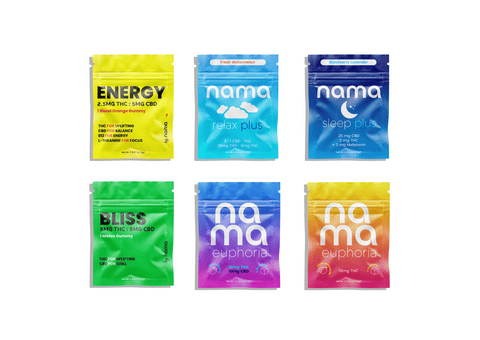
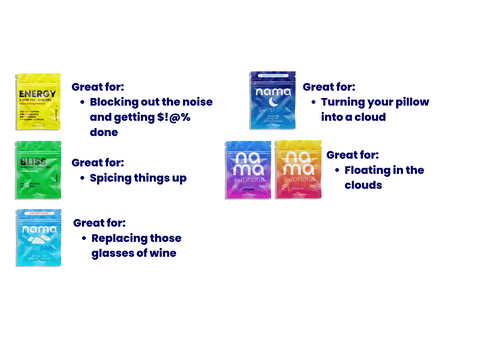
![Buzz Drops™ [THC Drink Drops]](http://www.namacbd.com/cdn/shop/files/nama_thc_buzz_drops.png?v=1711412866&width=480)
![Buzz Drops™ [THC Drink Drops]](http://www.namacbd.com/cdn/shop/files/buzz-drop-wine-comparison.png?v=1736882023&width=480)
![Buzz Packs™ [THC and CBD Powder Drink Mix]](http://www.namacbd.com/cdn/shop/files/nama_buzz_packs_thc_drink_pack_white_background.png?v=1741884660&width=480)
![Buzz Packs™ [THC and CBD Powder Drink Mix]](http://www.namacbd.com/cdn/shop/files/Buzz_Packs_Label.png?v=1741884660&width=480)
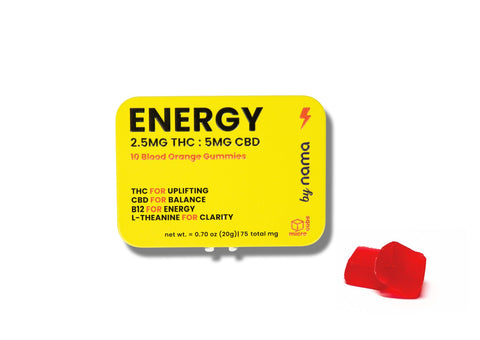
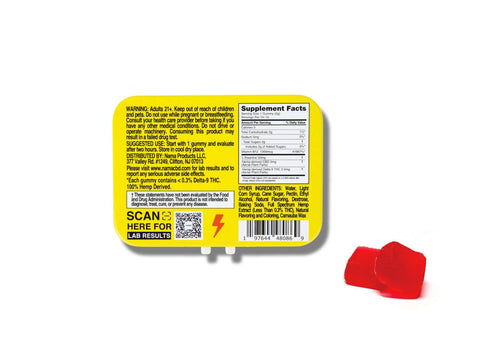
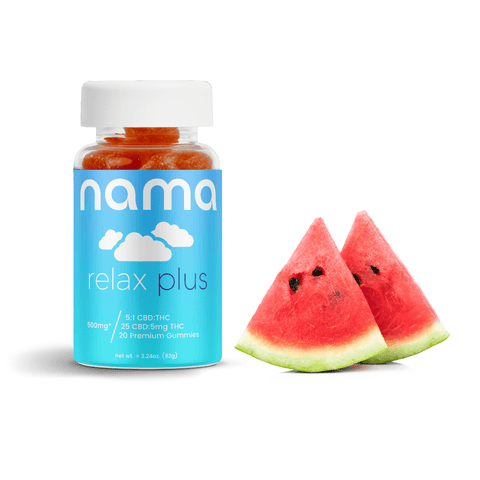
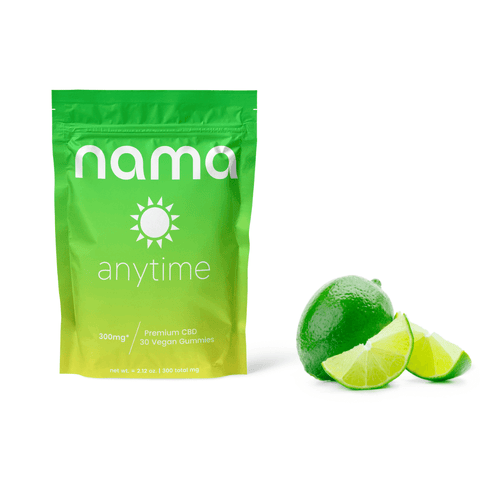
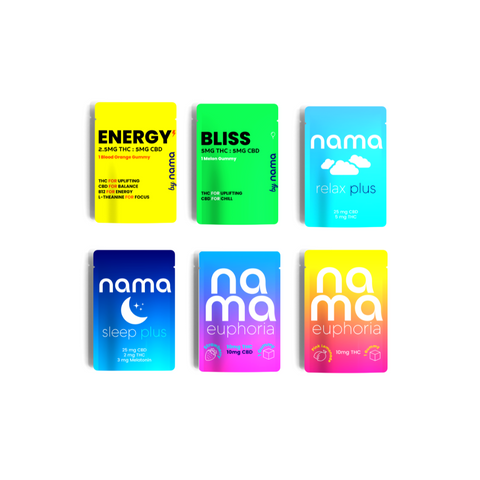
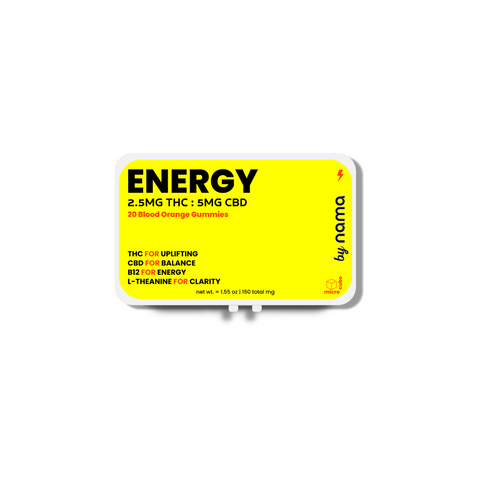
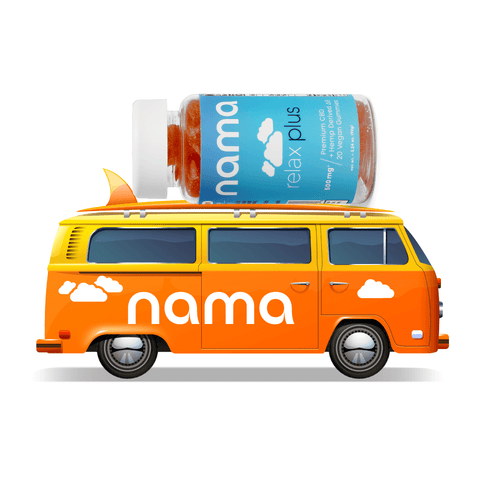
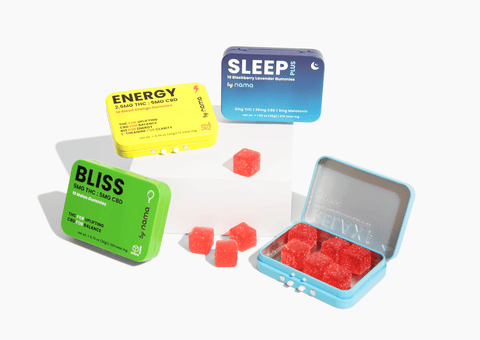
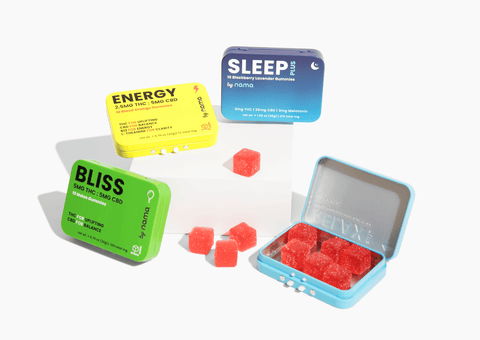
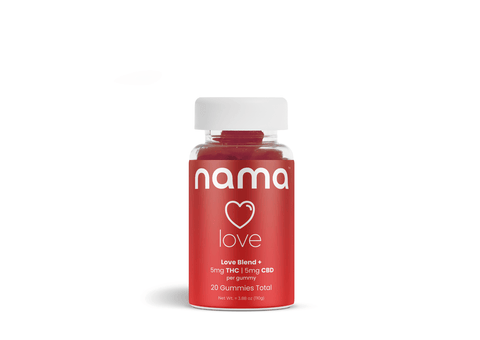
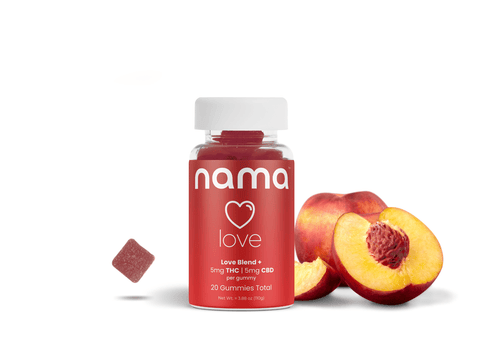
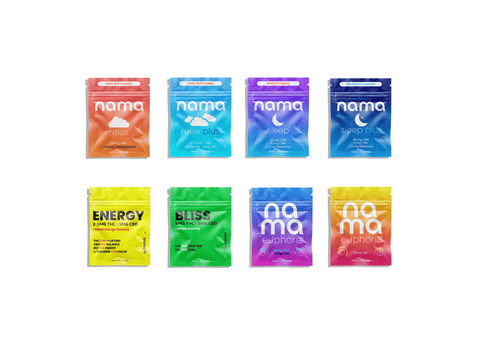
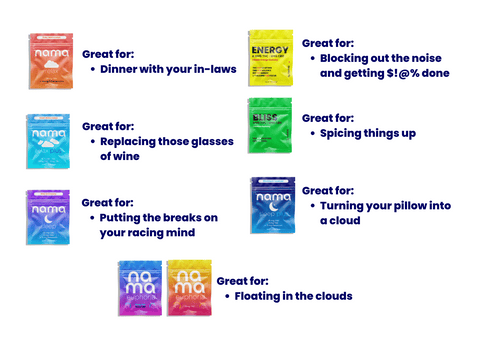
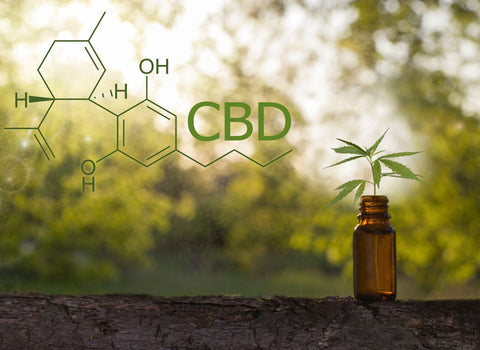
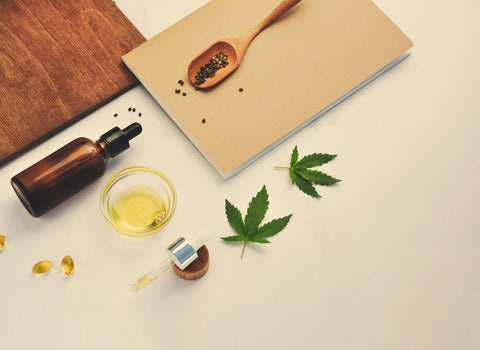

Comments (0)
There are no comments for this article. Be the first one to leave a message!